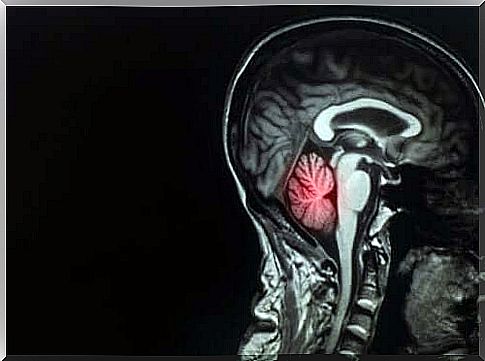Types Of Treatment For Brain Metastases

In today’s article, we will explain everything you need to know about brain metastases, including what are the main types of treatment for them.
Brain metastases account for approximately 90% of brain tumor cases. Treating them is a real challenge for doctors.
It is estimated that between 10% and 40% of cancer patients have brain metastases. The incidence of this health problem is increasing because, thanks to modern therapies, the life expectancy of cancer patients is increasing.
Tumors have the ability to metastasize to the brain and penetrate the blood-brain barrier, which covers and protects this organ.
Metastasis is an ability that all cancer cells possess and involves invading both neighboring tissues and those removed from the initial tumor. In other words, cancer cells can migrate to other parts of the body, leading to the formation of new tumors.
The clinical metastasis of the brain varies and depends on the affected region and the risk of associated seizures.
Causes of brain metastases

Brain metastases tend to occur as a result of hematogenous dissemination. Cancer cells of the primary tumor enter the bloodstream, migrate to the brain and spread.
An interesting aspect is that the distribution of brain metastases is proportional to the blood flow in the target region. They are distributed as follows:
- 80% develop in brain damage
- 15% grow in the cerebellum
- 5% develops on the brain stem
The first step that cells must take to spread to the brain is to invade the arterial wall of the primary tumor. In this way, they will be able to enter the bloodstream.
Then, the cell or cells that have reached the bloodstream must adhere to the vessels of the brain by penetrating the blood-brain barrier.
The blood-brain barrier and the absence of a lymphatic system give the brain significant protection against drugs and microorganisms. But this protection system is not able to prevent the penetration of certain cells.
How can neoplastic cells penetrate the blood-brain barrier?

The mechanism used by neoplastic cells to penetrate the blood-brain barrier is worth studying. However, it has been shown that there are at least two relevant mechanisms:
- Paracellular mechanisms: Neoplastic cells pass through the cells that make up part of the barrier. To this end, they destroy the connecting elements between cells and must possess certain proteins and inflammatory mediators.
- Transcellular mechanisms: Neoplastic cells cause the direct death of the cells that make up the barrier.
What happens after neoplastic cells have penetrated the blood-brain barrier?
As soon as they enter the brain, these cells pass into the brain microvascular and then go to the tissues.
The survival and proliferation of neoplastic cells will depend on their ability to maintain an adequate amount of oxygen and nutrients. This is why they do not move very far from the blood vessels.
Treatment options for brain metastases

Regarding the treatment of brain metastases, we can mention the following variants:
- Segmental resection: Involves removal of the tumor through a small incision. It involves a vitrectomy and offers several benefits, such as remedying the effects of the tumor, eliminating the source of the edema and improving the patient’s chances of survival compared to holocranial radiotherapy on their own.
- Holocranial radiotherapy: It is considered to be the best treatment for large tumors. It can complement surgical solutions, significantly reducing the incidence of relapses.
- Stereotactic radiosurgery: Consists of focal administration of radiation to the tumor. It provides a survival rate and a lower risk of recurrence in patients with injuries. It can be controlled more easily, but the chances of survival of patients with two or three lesions are not considerably improved.
- Chemotherapy: Brain metastases tend to be very resistant to chemotherapy. But the integration of new therapeutic alternatives, such as agents that target certain cells and inhibitors of immune checkpoints, has intensified research in this area.
conclusions
Brain metastases make up about 90% of brain cancers. It is essential that patients get a correct diagnosis as soon as possible in order to stop the evolution of the disease.
Currently, there are several treatment options for brain metastases. Their efficiency is constantly being improved. But this type of cancer is very aggressive and more research is needed in the field.
We hope that the information in this article will be useful to you!









